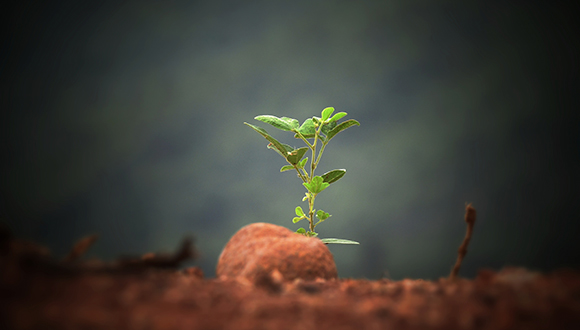The key to halting climate change is reducing fossil fuel combustion, not planting trees
Against the backdrop of today’s Global Climate Strike, we report on an article according to which planting trees could become an excuse to carry on emitting carbon dioxide into the atmosphere. Josep Peñuelas, a CSIC researcher based at CREAF, says our priority should be reducing fossil fuel combustion to zero.

Against the backdrop of today’s Global Climate Strike, we report on an article according to which planting trees could become an excuse to carry on emitting carbon dioxide into the atmosphere. Josep Peñuelas, a CSIC researcher based at CREAF, says our priority should be reducing fossil fuel combustion to zero.
“Planting trees and other solutions based on nature could provide an excuse to carry on emitting CO2 into the atmosphere, a false sense of security that forests will take care of everything”, warns Josep Peñuelas.
The authors offer relevant scientific evidence to show that our capacity to emit CO2 into the atmosphere far outstrips natural ecosystems’ potential to sequester it and retain it in carbon sinks. They place particular emphasis on the enormous expanses of land and water which would be necessary to create natural spaces large and robust enough to sequester all the excess CO2 present in the atmosphere. They also note that there are more and more studies that demonstrate the inefficacy and the collateral effects of efforts to mitigate climate change through forest management. In their opinion, planting forests and restoring wetlands and peat bogs should be part of our strategy for fighting climate change and protecting nature, but the most important and effective decisions must focus on reducing emissions.
Six reasons to prioritize eliminating CO2 emissions over planting trees to offset them
The article analyses the limits of ecosystems’ carbon sequestration capacity based on measurements of carbon fluxes from 155 sites across the planet. The authors conclude that there is no “one-size-fits-all” solution in terms of identifying which plants and ecosystems sequester CO2 most effectively or determining where or how carbon sequestration capacity can be improved. They make six crucial points to counter the notion that such improvements could be the key to preventing climate change:
- While increasing plants’ capacity for photosynthesis is an evident means of removing more CO2 from the atmosphere, there is a growing body of scientific evidence that this is not always an effective measure.
- More plant photosynthesis entails more respiration (whereby CO2 is returned to the atmosphere) and, most importantly, greater water consumption in plants. When plants are more active, they photosynthesize more but also require more water.
- The amount of carbon plants are able to absorb and the rate at which they absorb it are relatively low and slow in comparison to the amount of CO2 humans release by burning fossil fuels and the rate at which we do so.
- Vast expanses of land would be needed for natural ecosystems to serve as a carbon sink capable of mitigating anthropogenic carbon emissions.
- Using such a quantity of land as a carbon sink would only prove effective if the carbon sequestered were to be trapped in ecosystems permanently or for a very long time. The factors that have to be borne in mind in that regard include fire, which can burn down large swathes of forestland and release the carbon sequestered in trees into the atmosphere.
- It has been shown that converting land to forests or wetlands to increase carbon sequestration can have unintended effects that warm local climates, such as changing albedo (the proportion of sunlight reflected due to a surface’s colour), altering soil humidity, increasing surface roughness and releasing other greenhouse gasses.
As stated earlier, Baldocchi and Peñuelas believe that our approach to mitigating climate change should include planting trees. However, in the light of the urgent need to reduce atmospheric CO2 levels and the six points outlined above, they feel that we should focus our efforts on the most effective and immediate solution, namely cutting fossil fuel combustion to zero as quickly as possible.
Article:
Baldocchi, D., Peñuelas, J. 2019. The Physics and Ecology of Mining Carbon Dioxide from the Atmosphere by Ecosystems. Global Change Biology 2019








